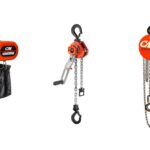Efficient inventory replenishment is a cornerstone of successful warehouse management. Without a well-planned strategy, warehouses risk overstocking, stockouts, and inefficient order fulfillment, all of which can lead to increased costs and dissatisfied customers. As demand patterns shift and supply chain complexities grow, warehouse managers must implement replenishment strategies that ensure the right products are available at the right time, in the right quantities.
By adopting best practices for inventory replenishment, warehouses can optimize stock levels, reduce operational costs, and improve overall efficiency. Here are the key strategies to consider.
1. Implement Demand Forecasting
Accurate demand forecasting is the foundation of effective inventory replenishment. By predicting future sales trends, warehouses can maintain optimal stock levels, prevent shortages, and reduce excess inventory.
How to Improve Demand Forecasting:
- Analyze historical sales data to identify seasonal trends and recurring demand patterns.
- Monitor market trends and customer behavior to anticipate shifts in demand.
- Use AI-driven forecasting tools to analyze large datasets and predict demand fluctuations with greater accuracy.
- Collaborate with suppliers to align inventory replenishment with production schedules and lead times.
By leveraging data-driven forecasting, warehouses can ensure they replenish inventory proactively rather than reactively.
2. Set Optimal Reorder Points
Replenishment timing is critical to maintaining a seamless flow of inventory. Setting reorder points helps ensure stock is replenished before it runs out, preventing stockouts and fulfillment delays.
Key Factors for Setting Reorder Points:
- Lead time – The time required for a supplier to process and deliver new stock.
- Safety stock levels – Additional inventory kept on hand to prevent disruptions caused by sudden demand spikes or supplier delays.
- Average daily usage – The rate at which items are consumed based on historical order data.
A well-calculated reorder point prevents over-ordering while maintaining sufficient stock levels to meet demand.
3. Utilize the Just-in-Time (JIT) Inventory Method
The Just-in-Time (JIT) approach minimizes excess inventory by replenishing stock only as needed. This method reduces storage costs, improves cash flow, and prevents product obsolescence.
Best Practices for Implementing JIT Inventory:
- Establish strong relationships with reliable suppliers to ensure timely deliveries.
- Maintain real-time inventory visibility to track stock movement accurately.
- Use automated replenishment alerts to trigger orders when stock reaches predefined thresholds.
JIT inventory is particularly useful for fast-moving products with predictable demand patterns. However, it requires careful planning to avoid supply chain disruptions.
4. Leverage Automated Inventory Management Systems
Modern inventory management systems (IMS) streamline replenishment by tracking stock levels in real time and automating order placements.
Benefits of Automation in Inventory Replenishment:
- Minimizes human error by reducing reliance on manual inventory tracking.
- Improves efficiency by automating replenishment processes based on preset parameters.
- Enhances inventory visibility by providing real-time updates on stock levels across multiple locations.
By integrating inventory management software with warehouse operations, managers can optimize replenishment while reducing administrative workload.
5. Optimize Supplier Relationships and Lead Times
Strong supplier relationships play a critical role in efficient inventory replenishment. Clear communication and well-structured agreements help reduce lead times and ensure consistency in supply.
How to Improve Supplier Coordination:
- Negotiate better lead times with suppliers to speed up replenishment.
- Diversify suppliers to avoid dependency on a single source and mitigate risks.
- Monitor supplier performance through key metrics like on-time delivery rates and order accuracy.
Well-managed supplier relationships help warehouses maintain a steady flow of inventory while adapting to changes in demand.
6. Categorize Inventory with ABC Analysis
Not all inventory items require the same level of attention. ABC analysis helps prioritize stock based on value and demand frequency, allowing for better replenishment planning.
ABC Inventory Categories:
- A-items – High-value, high-demand products that require frequent replenishment.
- B-items – Mid-tier products with moderate demand and value.
- C-items – Low-cost, slow-moving items that need less frequent replenishment.
By classifying inventory into these categories, warehouse managers can focus replenishment efforts on the most critical items while minimizing storage costs for less important stock.
7. Implement Cycle Counting to Improve Accuracy
Inventory discrepancies can lead to mismanaged replenishment. Cycle counting is a method of regularly auditing stock levels in small, manageable increments instead of conducting large, annual physical inventories.
Advantages of Cycle Counting:
- Identifies discrepancies early to prevent stockouts and over-ordering.
- Reduces disruptions compared to full-scale inventory audits.
- Improves replenishment accuracy by ensuring stock data is consistently up to date.
Frequent cycle counting ensures inventory records remain reliable, leading to more effective replenishment decisions.
8. Use Cartonization to Streamline Order Fulfillment
Cartonization involves determining the most efficient way to pack and ship products based on size, weight, and order requirements. While primarily used in fulfillment, cartonization also impacts inventory replenishment by optimizing storage and reducing wasted space.
How Cartonization Supports Replenishment:
- Improves warehouse space utilization by minimizing excessive packaging.
- Enhances picking and packing efficiency, reducing processing times.
- Reduces shipping costs by optimizing carton sizes for outbound orders.
By integrating cartonization strategies with inventory replenishment, warehouses can optimize space management and ensure stock is stored in the most efficient manner possible.
9. Monitor and Analyze Key Inventory Metrics
Tracking performance metrics provides valuable insights into the effectiveness of replenishment strategies. Regular analysis helps identify areas for improvement and ensures inventory levels align with business goals.
Key Metrics to Track:
- Stock turnover rate – Measures how quickly inventory is sold and replenished.
- Order accuracy – Evaluates the percentage of correctly fulfilled orders.
- Lead time variance – Tracks fluctuations in supplier delivery times.
- Holding costs – Analyzes expenses associated with storing excess inventory.
Using data-driven insights, warehouse managers can fine-tune replenishment strategies and improve overall efficiency.
Final Thoughts
Managing inventory replenishment effectively is essential for maintaining smooth warehouse operations, reducing costs, and ensuring customer satisfaction. By leveraging demand forecasting, automated inventory management, optimized supplier coordination, and cartonization strategies, warehouses can improve stock availability while minimizing waste.
With the right replenishment strategies in place, warehouses can achieve a balance between efficiency and cost control, creating a streamlined operation that adapts to changing market demands. Implementing these best practices will not only enhance warehouse productivity but also set the foundation for long-term success in inventory management.







